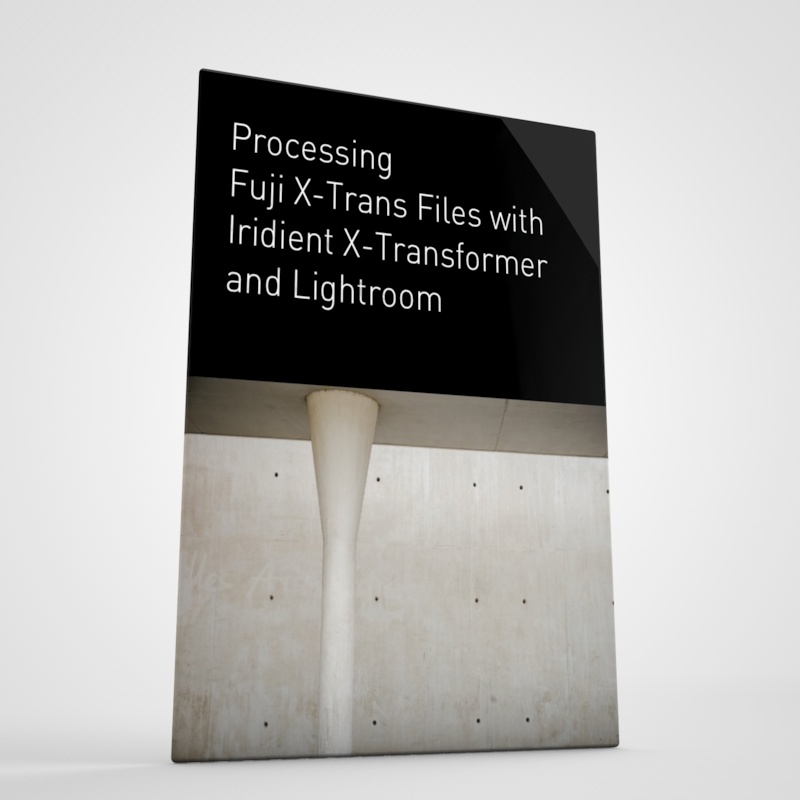

JPEG from Lightroom Enhanced Details DNG | Aunt Molly Road, Hopewell Township | FujiFilm X-T2 | Fujinon XF16-55mmF2.8 R LM WR JPEG from Iridient X-Transformer DNG created with Smoother RAW Process | Aunt Molly Road, Hopewell Township | FujiFilm X-T2 | Fujinon XF16-55mmF2.8 R LM WR JPEG from RAF | Aunt Molly Road, Hopewell Township | FujiFilm X-T2 | Fujinon XF16-55mmF2.8 R LM WR JPEG from Iridient X-Transformer DNG created with More Detailed RAW Process | Aunt Molly Road, Hopewell Township | FujiFilm X-T2 | Fujinon XF16-55mmF2.8 R LM WR Iridient X-Transformer Settings Iridient X-Transformer Settings Iridient X-Transformer Settings I left the sharpening and noise reduction at the Adobe Lightroom defaults. I made adjustments to exposure, contrast, highlights, shadows, whites, blacks, vibrancy, and saturation. The featured image in this blog post is a FujiFilm X-T2 RAF post-processed in Adobe Lightroom. I don't recall anyone suggesting that I use a pair of binoculars or a magnifying glass so that I could better appreciate the work. I've visited many art and photography galleries in my lifetime.
#IRIDIENT X TRANSFORMER SETTINGS PROFESSIONAL#
However, if you are a photographer, professional or amateur, for whom the technical bits of photography is not the main point, then I think you must do whatever produces the results you want, even if it's the SOOC JPEG. If you are a professional photographer, aka someone whose source of income is photography, who must produce the best technical image, the difference may be of concern to you. that there's very little practical difference. I think that once an image has been post-processed, then downsized and compressed for the web - most photographs are being shared online via blogs, Instagram, Facebook, etc. Other photographers have taken a "zoom in until you find a difference" approach, testing the software, only to discover that the difference varies very subtlely between photographs and other factors help make the decision. I think it's mostly ignorance from some photographers. You can avoid worms by masking out certain textures or by just having a generally softer photo.The buzz around the web is that Adobe Lightroom does a shitty job with the handling of RAW FujiFilm X-Trans files and that Iridient X-Transformer is the fix. They're purely a result of sharpening, and they exist whether you use Lightroom, Irident or Photoshop sharpening or demosaicing. I've also done a ton of experimentation, and I disagree that the worms have anything to do with demosaicing. I'm going throught the same process and now turning everything off in x-transformer. I find Iridient's default setting oversharpen and are super "crunchy". I had been using “default settings”, whatever that entails, so apparently it is time to change settings. If someone can do better on different software, I'd very much like to see it.
#IRIDIENT X TRANSFORMER SETTINGS ISO#
The dpreview test shot from the X-T2 at ISO 12800. It really quite simple, not much extra work at all. Then I can finish editing and add sharpening and NR (different than what I would use in LR alone). In Lr, after I've gone through them, usually cropping and pre-editing as I go, I will select the keepers and just process those through X-Transformer, all the cropping and editing carry over into the DNGs. I always save the original RAFs (you never know what better processor might come along). The worms are not a product of LR sharpening, they are demosaiicing errors that are accentuated by sharpening.

If you use it correctly, it works just fine with properly demosaiiced files.

Do all your NR and sharpening in Lightroom, yes, I said Lightroom. I also let it handle the lens corrections, which is identical to LR. You want to just use for its superior demosaiicing algorithm. Set it for MORE DETAILED (actually doesn’t make much difference), Set the Iridient Sharpening and NR to NONE, it just changed with the last update, but it probably still sucks - it adds all sorts of ugly artifacts, particularly at high ISOs. I have done extensive experimentation with XT/Lightroom and have come to the same conclusions as some others who've been at this a while.


 0 kommentar(er)
0 kommentar(er)
